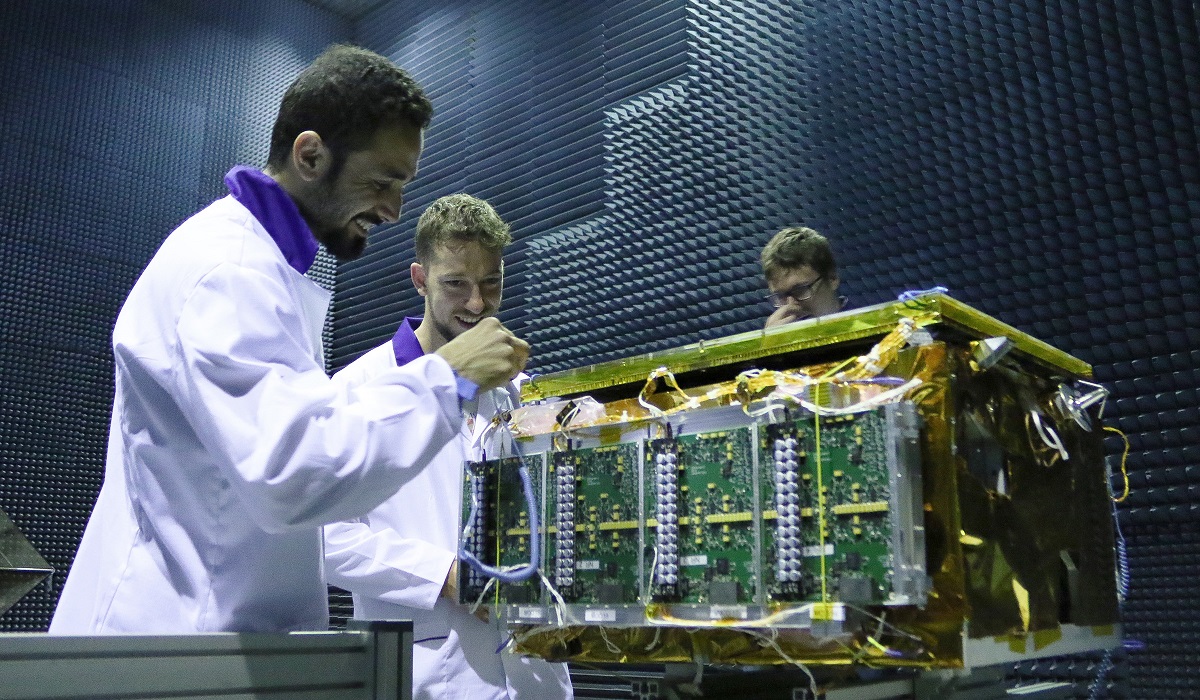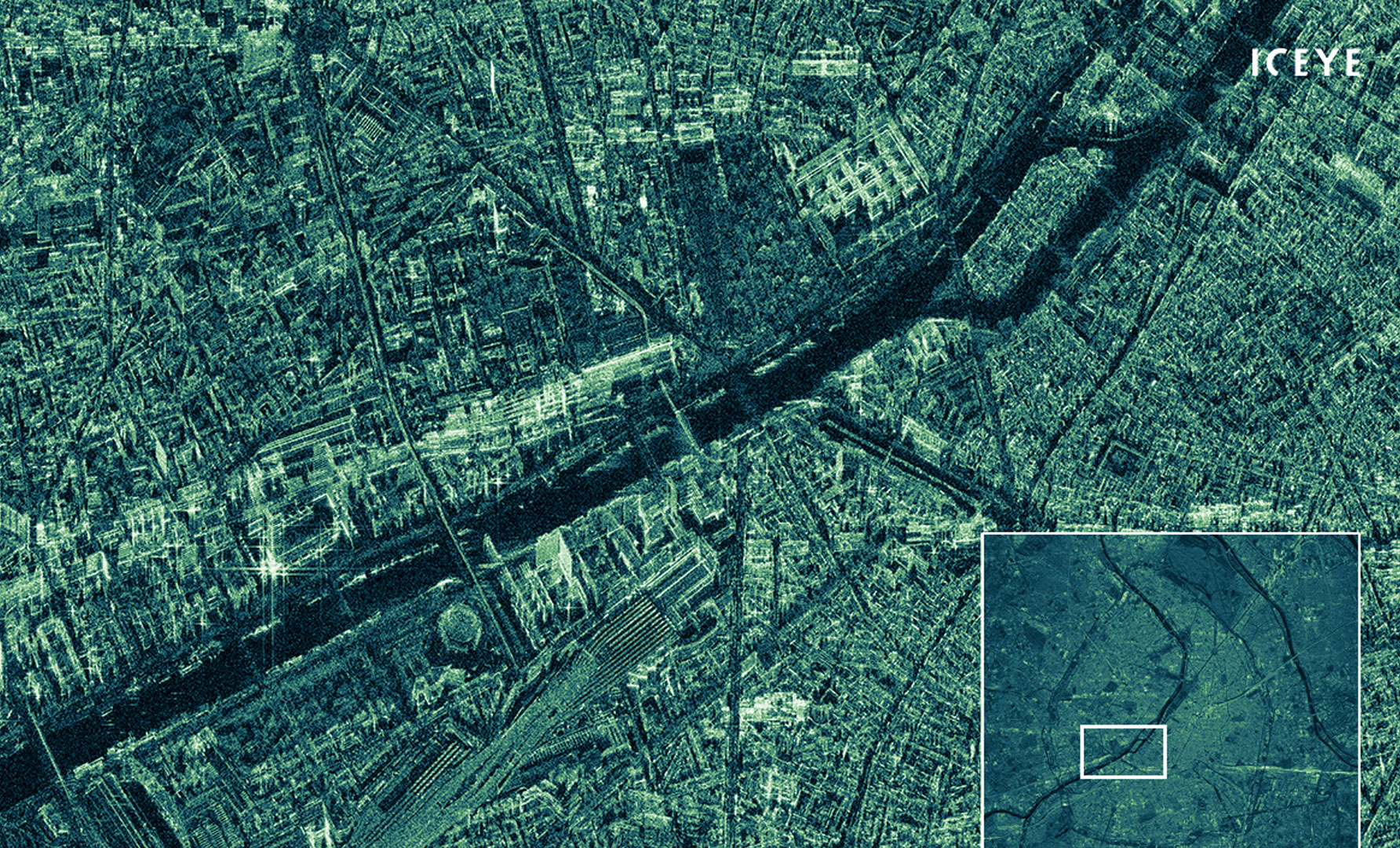ICEYE is a Finnish microsatellite manufacturer that was founded in 2014 as a spin-off of Aalto University's University Radio Technology Department. ICEYE is designed to provide near-real-time SAR imagery using SAR sensor technology. Each satellite of the ICEYE constellation carries an X-band Synthetic Aperture Radar (SAR), allowing the instruments to see through darkness, clouds and rain to observe Earth at all times. ICEYE satellites, each with a mass of 85 kg, are side-looking X-band SAR sensors utilizing active phased array antenna (electronically steerable) technology. It is both right- and left-looking and capable of acquiring satellite imagery of Earth using stripmap, spotlight and ScanSAR imaging modes. The satellites are in sun-synchronous orbit at an inclination of 97.7° with an orbital frequency around 96 minutes. In 2015, ICEYE demonstrated that synthetic-aperture radar (SAR) technology on a smallsat satellite could be used to monitor hazardous ice features such as pack ice. In October 2019, ICEYE started offering commercial access to its 1-metre resolution SAR-imagery, and operated 3 SAR satellites. In August 2022, during the Russian invasion of Ukraine, ICEYE signed a contract with the Serhiy Prytula Charity Foundation that would give the Armed Forces of Ukraine access to one of its satellites. After their launch in May, 2022 two satellites were transfered to the Brazilian Air Force as Carcará 1 and 2.
ICEYE X1 & ICEYE X2 satellites info
| Nation: | Finland |
| Company/operator: | ICEYE |
| Platform/configuration: | ICEYE-bus |
| Mass: |
|
| Orbit: |
|
| Instruments: |
|
| Antenna size: | 3.2 m x 0.4 m |
| Purpose: | Earth monitoring |
| Launch vehicles: |
|
| Website: | https://www.iceye.com |

Video
ICEYE satellites launch overview
| Flight no. | Date launch | Rocket | Launch base | Orbit | Satellites launched | Mission succes? |
|---|---|---|---|---|---|---|
| 1 | 12/01/2018 | PSLV-XL | Satish Dhawan Space Centre (India) | 500 km | 1 (ICEYE X1) | Success |
| 2 | 03/12/2018 | Vandenberg Air Force Base (USA) | 570 km | 1 (ICEYE X2) | Success |
|
| 3 | 05/05/2019 | Launch Complex 1 | 500 km | 1 (ICEYE X3) | Success |
|
| 4 | 05/07/2019 | Soyuz-2-1b Fregat | Vostochny Cosmodrome (Russia) | 580 km | 2 (ICEYE X4 & X5) | Success |
| 5 | 28/09/2020 | Soyuz-2-1b Fregat | Plesetsk Cosmodrome (Russia) | 580 km | 2 (ICEYE X6 & X7) | Success |
| 6 | 24/01/2021 | Cape Canaveral (USA) | 580 km | 3 (ICEYE X8, X9, X10) | Success |
|
| 7 | 30/06/2021 | Cape Canaveral (USA) | 580 km | 3 (ICEYE X11, X12, X13) | Success |
|
| 8 | 30/06/2021 | Cape Canaveral (USA) | 580 km | 4 (ICEYE X11, X12, X13, X15) | Success |
|
| 9 | 13/01/2022 | Cape Canaveral (USA) | 580 km | 2 (ICEYE X14 & X16) | Success |
|
| 10 | 25/05/2022 | Cape Canaveral (USA) | 580 km | 5 (ICEYE X17, X18, X19, X20, X24) | Success |
|
| 11 | 03/01/2023 | Cape Canaveral (USA) | 580 km | 3 (ICEYE X21, X22, X27) | Success |
|
| 12 | 12/06/2023 | Cape Canaveral (USA) | 580 km | 4 (ICEYE X23, X25, X26, X30) | Success |
|
| 13 | 11/11/2023 | Cape Canaveral (USA) | 580 km | 4 (ICEYE X31, X32, X34, X35) | Success |
ICEYE data samples

Images: ICEYE

